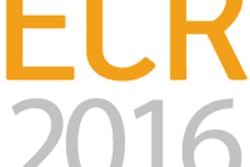Contrast-enhanced ultrasound (CEUS) can track tumor changes in children receiving antiangiogenic therapy, predicting patient progression as soon as after the first treatment course, according to a talk at the recent International Contrast Ultrasound Society (ICUS) Bubble Conference in Chicago.
In a small prospective study, a team from St. Jude's Children's Research Hospital in Memphis, TN, found that three quantitative parameters calculated on dynamic CEUS studies were associated with how long it took a patient to complete treatment after the first course of antiangiogenic therapy. Responders to treatment also had much larger decreases in parameters measured on CEUS than those who did not respond to therapy.
"Quantitative [contrast-enhanced ultrasound] detects changes in tumor blood flow very early in therapy," said presenter Dr. Beth McCarville.
Antiangiogenic therapy
To grow and metastasize, tumors need to develop new blood vessels, a process known as angiogenesis. Antiangiogenic therapies are increasingly being used in clinical trials, but unlike chemotherapy, which causes tumors to shrink, these treatments can effectively prevent tumors from growing and spreading without causing a change in tumor size, McCarville said.
As a result, the conventional imaging modalities used to assess treatment response based on a reduction in tumor size aren't suitable for monitoring antiangiogenic therapy. Because ultrasound contrast media are strictly intravascular agents, they're ideally suited for use as surrogate markers for tumor blood flow, she said.
CEUS is an emerging and valuable tool for assessing antiangiogenic therapy in adults, but there have been no reports to date of its use in children, McCarville said.
"Children are really the ideal patient population to develop this modality, especially pediatric oncology patients because they undergo so much imaging during and after therapy," she said. "Much of that is CT, which exposes them to ionizing radiation, or MRI for which we need to use sedation ... [and] that has its own risk."
Testing the value of CEUS
As a result, the researchers set out to investigate the value of quantitative dynamic contrast ultrasound for assessing tumor response to antiangiogenic therapy in children and adolescents with recurrent or refractory solid tumors. The prospective study was conducted in patients 21 years or younger who were participating in an institutional phase I trial of antiangiogenic therapy (bevacizumab, sorafenib, and low-dose cyclophosphamide). CEUS was optional for patients and required separate informed consent.
To be eligible for CEUS, patients had to have at least one target lesion that was visible on grayscale ultrasound. All patients were also required to have a complete history and physical, including 12-lead electrocardiography and an echocardiography study. In addition, they could not have a history of ultrasound contrast allergy, a right-left cardiac shunt, pulmonary hypertension, or oxygen saturation levels less than 92% on room air.
CEUS was performed at baseline before therapy was initiated, and then again on day 3, day 7, and the end of the first course of therapy (21 days). Patients also received CEUS at the end of the second course of therapy and at the end of every other course until they progressed and came off the treatment protocol.
All studies were performed with the same Acuson Sequoia scanner (Siemens Healthcare) using its contrast pulse sequencing software, a 6C2 or 15L8 transducer, and a mechanical index of 0.2. The contrast agent was injected through a central line or peripheral IV access; subjects weighing less than 20 kg (44 lb) received 0.35 mL of contrast, while those weighing 20 kg or more were given 0.5 mL.
Target lesions
The target lesion for CEUS was chosen based on visibility on grayscale ultrasound and the presence of landmarks; the landmarks were important to make sure that the same slice of tumor was scanned throughout the therapy period, McCarville said. The transducer was held in a single position throughout the study, and dynamic imaging was recorded for 60 seconds after bolus injection.
The region of interest (ROI) was analyzed online using the scanner's contrast quantification software package. The ROI was drawn inside tumor margins, and raw acoustic data were used to create time intensity curves. Six CEUS parameters were measured from the time intensity curves: peak enhancement, rate of enhancement, time to peak enhancement, area under the curve for contrast wash-in, area under the curve for contrast washout, and area under the curve for both wash-in and washout.
The study included 74 CEUS exams performed on 13 subjects (four girls and nine boys) with a mean age of 13 years (range, 1.8-19.8 years). Primary diagnoses included the following: Two patients had rhabdomyosarcoma, two patients had rhabdoid tumor, two patients had Wilms tumor, and one patient each had renal cell carcinoma, hepatocellular carcinoma, osteosarcoma, synovial sarcoma, epithelioid sarcoma, and Ewing sarcoma.
The target lesion sites were in the liver (three patients), pleura (two patients), supraclavicular region (one patient), soft-tissue component of bone metastasis (one patient), lung (one patient), retroperitoneum (one patient), peritoneum (one patient), lymph node (one patient), muscle mass (one patient), and perineum (one patient).
Significant parameters
Three CEUS parameters at the end of the first course of treatment were found to have a statistically significant association with time to treatment progression: peak enhancement (p = 0.034), rate of enhancement (p = 0.029), and the area under the curve for washout (p = 0.040).
| Contrast ultrasound parameters | |||
| CEUS | Peak enhancement | Rate of enhancement | Area under the curve for washout |
| On day 3 | 1.26 | 0.97 | 1.03 |
| On day 7 | 1.24 | 1.25 | 1.03 |
| On day 21 (end of course) | 1.17 | 3.3 | 1.023 |
Some parameters, notably peak enhancement, trended toward significance as early as day 3 and day 7 after therapy, she said.
As determined after 42 days in the treatment protocol, there were nine responders and four nonresponders to the antiangiogenic therapy. While there weren't enough patients in each group to perform meaningful statistical analysis, the responders had much larger decreases in every parameter between the baseline studies and each of the subsequent studies.
"Most significantly ... the decrease in [peak enhancement in] responders was four to six times greater than what we saw in the nonresponders," she said.
McCarville acknowledged a number of limitations to the study, including its small sample size and the inclusion of a variety of tumor types. In addition, the scans were only performed on one target lesion and on one slice of the tumor.
Nonetheless, the data show that quantitative CEUS can spot tumor blood-flow changes very early in therapy, according to McCarville.
"Importantly, this approach avoids exposing our patients to both radiation and sedation," she said. "These findings are promising but need further investigation in larger clinical trials."



















